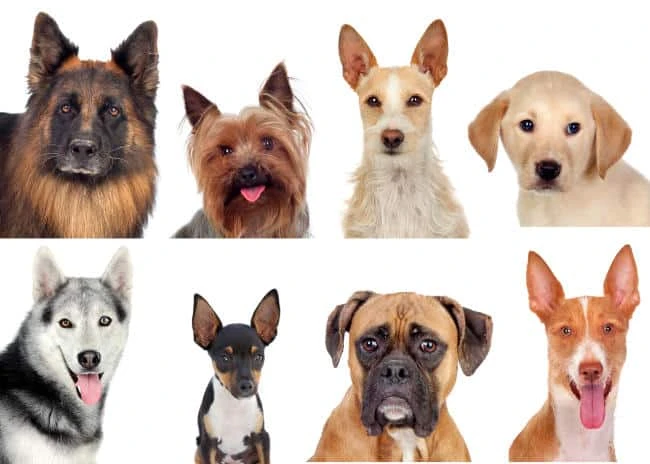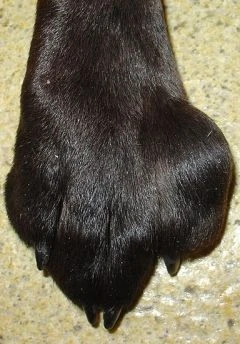The Dog Owners Guide to Canine Mast Cell Cancer

Before we go into detail about canine Mast Cell Cancer we need to explain what a Tumor actually is.
A Tumor is basically an abnormal growth that can be malignant or benign. A malignant Tumor will normally grow much faster and will invade skin and normal healthy tissue causing the growths that you can see in the photos. Malignant Tumors are more dangerous especially when individual cells become detached from the initial growth metastizing and spreading through the blood or lymph nodes causing secondary Tumors in other organs or parts of your dog’s body.
SPECIAL NOTE: The above video references a book called The Dog Cancer Survival Guide. We very highly recommend this book for ANYONE who has a dog with cancer. Pick up a copy of this excellent book here.
A benign Tumor is far less threatening as it will remain static (although it may grow in size). These types of growths can be easily removed through surgery if they become so large that they start to cause problems in the area affected.
It is important to mention that any growth, lump or bump is referred to as a Tumor. If it is cancerous or a ‘true Cancer’ then it is referred to as a Neoplasm. Unfortunately canine Mast Cell Cancer (Tumors) are fairly common (in fact they account for ten to twenty percent of all skin Tumors on dogs). Although canine Mast Cell Cancer can occur in any breed they are more common in Boxers, Boston Terriers, Bulldogs, Retrievers (and they are very common in the Bernese Mountain Dog).
Below are just some of the growths that can grow on your dog’s skin:
Mast Cell Tumor This is the type of growth discussed throughout this page and can either appear on it’s own or as multiple growths (they are often found on your pooches legs, trunk and Perineum.
Skin Papillomas (Warts) This type of growth can develop anywhere and will protude from the skin resembling a wart (they are not dangerous).
Melanoma This is a small nodule colored brown or black (normally found where the skin is darker). Make sure that you get this type of Tumor checked (as you should with all growths) as Melanomas (especially those growing in the nailbeds or around the mouth are often malignant).
One of the most common types of Tumors to affect dogs are Mammary Tumors. This is when the growth develops on the Mammary gland. Although Mammary gland Tumors are often benign it is very important that you get your dog checked at least four times a year especially when she is going through the heat cycle.
Canine Mast Cell Cancer (Tumors) can affect any sex (male and female in equal measure) but they are more common in older dogs (in fact the average age of dogs that are affected are aged nine. The most common areas on your dogs body to find Mast Cell Tumors is on the hind legs, penis (foreskin), on the trunk and Perineum.
Mast Cell Tumors can come in all shapes and sizes and their appearance will vary greatly with each individual growth. However the typical Tumor is hairless, reddish in color an often ulcerated. It is impossible to look at a growth and determine whether it is malignant or benign – however it is possible for a growth that has been on your dog for many years to suddenly spread to the liver, spleen or lymph nodes.
It is also important to mention that not all canine Mast Cell Cancer Tumors will appear above the skin as some can form under the skin and stay there. It is therefore vital that however old your dog is and regardless of all the lumps and bumps that have developed on your dog that you get any new lump looked at by your vet.
It is also estimated that around eighty percent of dogs with Mast Cell Tumors will also have ulcers (this is because the Tumors release histamine alongside other different substances into your dogs system which can lead to stomach and duodenal ulcers).
Treatment For Canine Mast Cell Cancer

There is a set method set out by the World Health Organisation for staging the development of Mast Cell Tumors including how many are on your dog, their size, where they have been found etc.
Surgery will normally remove the growths (the earlier the better). Sometimes sime normal tissue will need to be removed if the Tumor is large so that as much of the growth is removed as possible. Medication will often be prescribed alongside the use of surgery including Prednisone and/or Radiation Therapy.
To help detect canine Mast Cell Cancer as early as possible you should check your pets skin regularly (you can either do this when you brush, groom or bath you pooch or at a separate time). If your dog is groomed professionally then ask the groomer after each appointment if any new lumps and bumps have appeared.
About cancer in more detail
When there is any mention of the big ‘C’ i.e. Cancer, dog owners can go into a real panic. Of course this is quite understandable but the disease does not always necessarily mean a death sentence. For example benign cancers and tumors can often be surgically removed and will not cause any more upset or problems to the affected dog.
The disease can become more problematic when the cancer starts to invade neighboring tissue and continues to grow and spread without restriction. This process of spreading or metastasizing is where cancerous cells become separated from the primary tumor and then enter the dog’s lymphatic and circulatory system. If your dog does become affected by an internal cancer then the disease can spread rapidly (sometimes before anything is suspected).
The early signs of the disease can include diarrhea,gastrointestinal bleeding,constipation, weight loss, a mass that can be felt in the abdomen and vomiting.
Did you know?
1. Even if the cancer has spread to the dog’s lymph nodes it can still be treated. This will involve the primary tumor being removed alongside the affected lymph nodes.
2. If your dog has a large mass or tumor that is causing secondary symptoms if this is removed the quality of your dog’s life can be greatly improved even if this is only on a temporary basis.
3. If your dog has a tumor that is growing on the surface of the skin there are a couple of techniques that can be used to remove them. Electrocautery is the process of burning off the growth using electricity and Cryosurgery can be effective in freezing the tumor so that it can be removed.
Why not take a look at our other pages on the different types of cancers to affect dogs…
- Bone cancer… A complete guide to bone cancer in dogs, it’s diagnosis, the causes, it’s symptoms and treatment.
- Stomach cancer… A debilitating form of the disease. Discover a complete guide to this type of cancer.
- Liver cancer… a simple and easy to understand guide for dog lovers.
- Pancreatic cancer… Learn everything there is to know about this type of cancer.
- Canine leukemia… An informative guide to leukemia in dogs.
- Oral cancer… An easy step by step guide to cancer of the mouth.
- Prostate cancer… and your dog. An insightful guide to this type of cancer.
- Cancer of the bladder… and how it affects your dog.
- The best diet… for a dog suffering from cancer and advice on a diet to help prevent the disease.
- Skin cancer… One of the best guides to skin cancer in dogs.
Dog Health Problems Online > Cancer In Dogs > Canine Mast Cell Cancer





